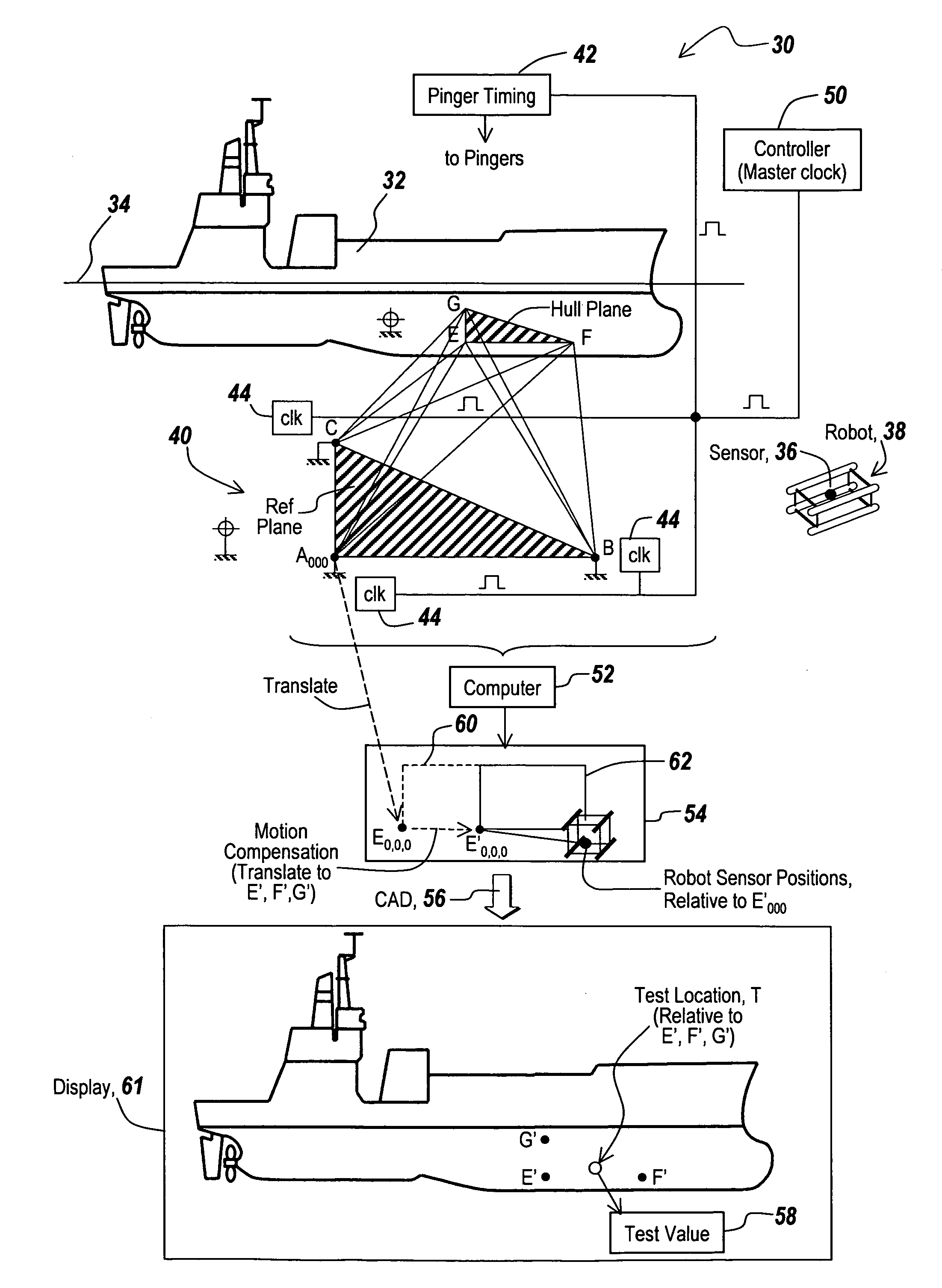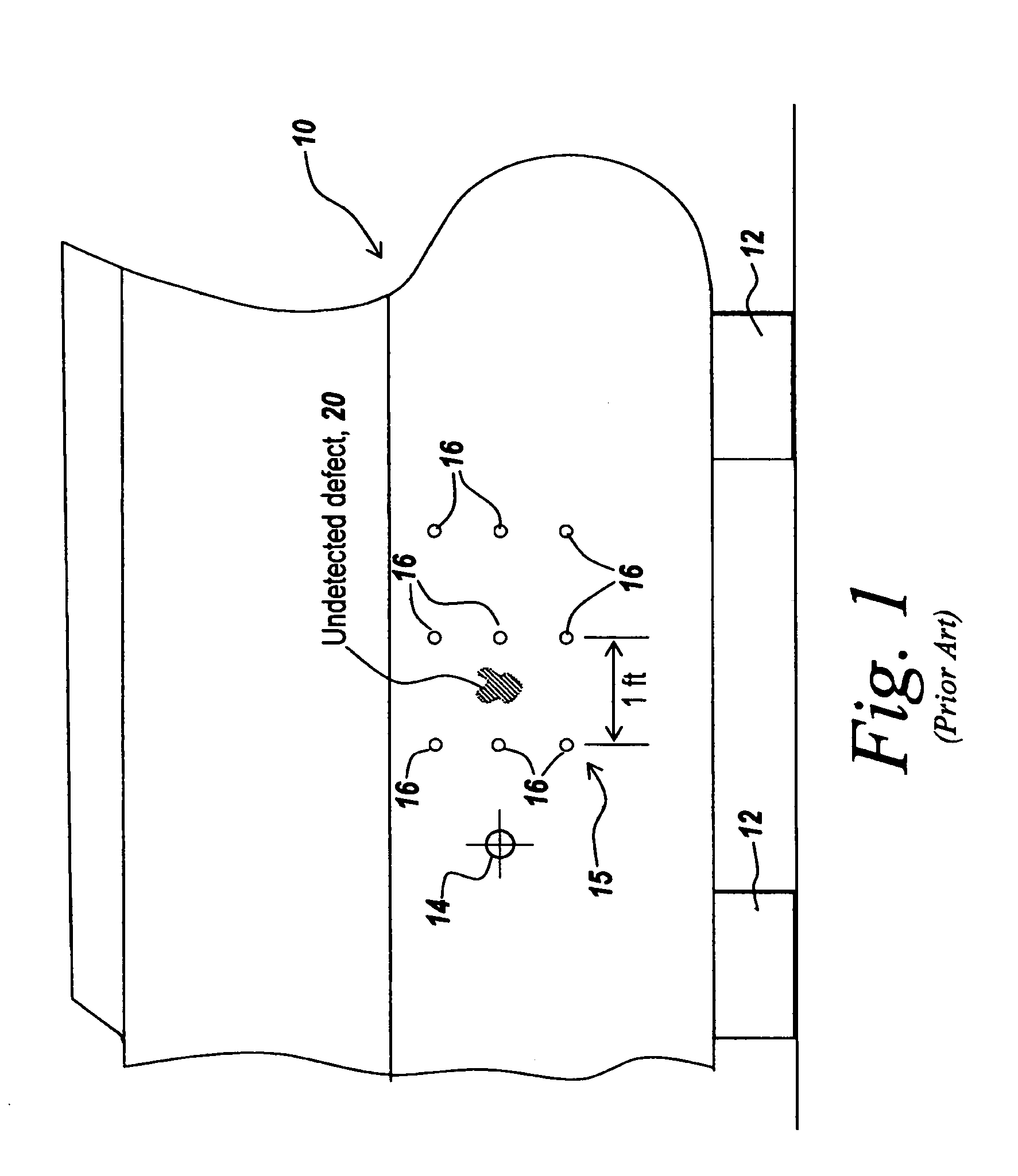Method and apparatus for performing an ultrasonic survey
a technology of ultrasonic and surveying equipment, applied in direction finders using ultrasonic/sonic/infrasonic waves, vessel construction, instruments, etc., can solve the problems of time-consuming process, position measurements subject to errors, and expensive process, so as to reduce the cost of hull survey and the time necessary
- Summary
- Abstract
- Description
- Claims
- Application Information
AI Technical Summary
Benefits of technology
Problems solved by technology
Method used
Image
Examples
Embodiment Construction
[0052]Referring now to FIG. 1, in the prior art, when a hull 10 is to be surveyed, it is hauled out at a dry-dock as symbolically illustrated by blocks 12. In order to perform the survey, a grid is mapped out on hull 10 relative to a fiducial point 14. The cross-points 16 on the grid are the points at which measurements are to be recorded.
[0053]Due to the difficulty of accurately locating measuring points relative to the fiducial point, a grid 15 is established across the hull mechanically by measuring rods or an overlay. However, due to the difficulty of providing a large number of measuring points on the hull, it is common to limit the number of measuring points by separating the measuring points 16 by one foot. It is assumed for surveying purposes that surveying the hull at these one-foot-spaced points is sufficient to be able to detect a defect 20, which defect could be a hull weakening, a hull wasting, deteriorating weld lines, or any other defect which would cause one to repai...
PUM
 Login to View More
Login to View More Abstract
Description
Claims
Application Information
 Login to View More
Login to View More - R&D
- Intellectual Property
- Life Sciences
- Materials
- Tech Scout
- Unparalleled Data Quality
- Higher Quality Content
- 60% Fewer Hallucinations
Browse by: Latest US Patents, China's latest patents, Technical Efficacy Thesaurus, Application Domain, Technology Topic, Popular Technical Reports.
© 2025 PatSnap. All rights reserved.Legal|Privacy policy|Modern Slavery Act Transparency Statement|Sitemap|About US| Contact US: help@patsnap.com



